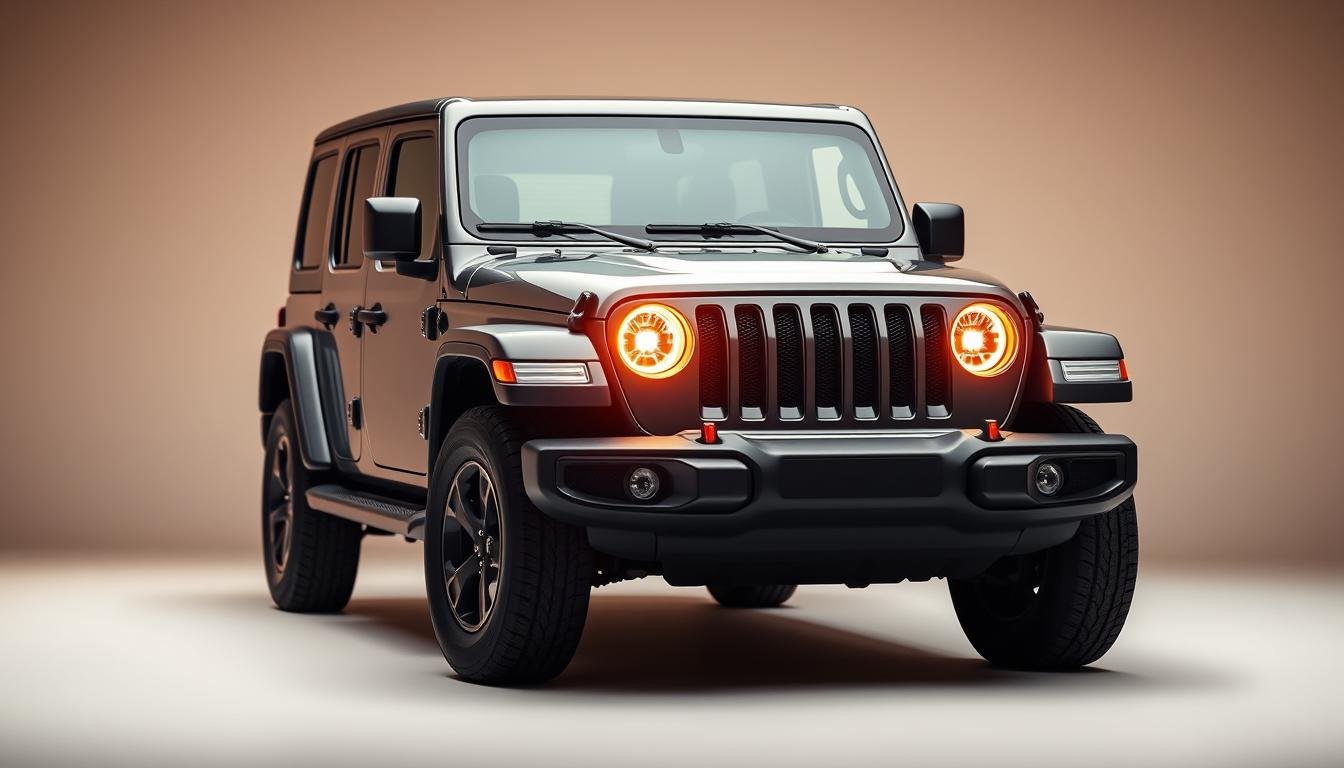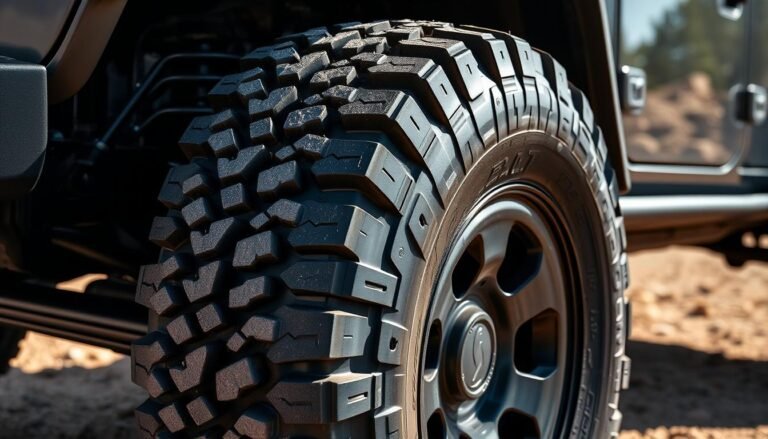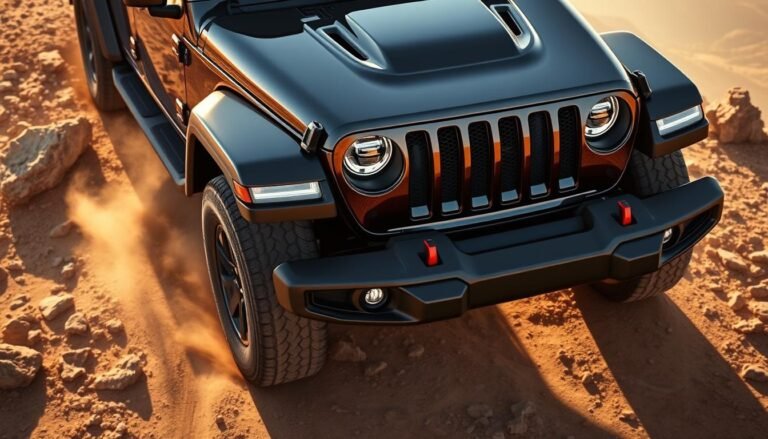Are Jeep Wranglers Good on Gas? Better 7 Fuel Efficiency
Are Jeep Wranglers good on gas? Known for their strength and off-road skills, Jeep Wranglers are now also known for better gas mileage.
You will learn about the MPG ratings of Jeep Wranglers and what affects their fuel efficiency. It’s key for both weekend explorers and daily drivers to know how they do with gas.
We’ll look into the different engines, transmissions, and setups that change how much gas is used.
This info helps you know what your Jeep will use and how to use less gas on your drives. You’ll get all the details to be smart about your Jeep’s gas needs.
What is Jeep Wrangler Fuel Efficiency?
Fuel efficiency is key when looking at the Jeep Wrangler’s performance. It measures how far the Jeep can go on a certain amount of gas.
This is often shown in miles per gallon (MPG). The Environmental Protection Agency (EPA) puts fuel economy into three types: City, Highway, and Combined MPG.
This helps you know how your Jeep’s gas mileage might change. It varies if you drive on city roads or highways. The Jeep Wrangler shines in off-road adventures.
But, this can mean it uses more fuel than cars built just for city or highway driving. On average, its MPG is lower compared to other SUVs.
Knowing this is useful. It helps you plan better for how and where you drive. This can help save on fuel over time.
| Driving Condition | Typical MPG Rating |
|---|---|
| City | 17-21 MPG |
| Highway | 21-24 MPG |
| Combined | 19-22 MPG |
Jeep Wrangler MPG Ratings Explained
The Jeep Wrangler’s fuel efficiency changes a lot across its models. This info is key for buyers looking at MPG ratings.
For example, the 2024 Jeep Wrangler with a V-6 engine gets 18 MPG in the city and 24 MPG on the highway. It has a combined rating of 20 MPG, showing a balance of power and fuel use.
If you want something that uses less fuel, consider the 2.0-liter turbo engine. It gets 20 MPG in the city and 23 MPG on the highway.
Its combined MPG is 21, showing the benefits of advanced engine tech on fuel use. The 4xe plug-in hybrid model is special, with an amazing 49 MPGe rating.
This advance in technology improves performance and is better for the environment, without losing strength.
Knowing about the different MPG ratings for the Jeep Wrangler helps you pick the right model. It all depends on what you need and how you drive.
What Determines The Jeep Wrangler Gas Mileage?
Every Jeep Wrangler owner should understand what affects their vehicle’s fuel economy.
Important factors are the engine type, the kind of transmission, and whether it’s a two-door or four-door model. These parts significantly affect gas mileage.
The type of engine makes a big difference in how much fuel your Jeep uses. For example, the 3.6-liter V6 and the 2.0-liter turbocharged four-cylinder engines offer different efficiencies.
The choice between manual and automatic transmissions also impacts MPG. Usually, cars with manual transmissions get different gas mileage than those with automatic ones.
Besides engine and transmission, other things also play a role in fuel efficiency. A heavier Jeep will use more fuel. The design of the Wrangler can also lower gas mileage due to wind resistance.
Plus, selecting a specific trim level changes fuel economy because of extra features. This gives each Jeep a unique fuel performance.
Jeep Wrangler MPG by Engine Type
The Jeep Wrangler has several engines, each with its own MPG. It’s important to know these differences to choose the right one. Here are the engine types and their fuel economy.
| Engine Type | City MPG | Highway MPG | Combined MPG |
|---|---|---|---|
| 3.6-Liter Pentastar V-6 | 18 | 24 | 20 |
| 2.0-Liter Turbo Four-Cylinder | 20 | 23 | 21 |
| 4xe Hybrid | 49 MPGe | 49 MPGe | 49 MPGe |
The 3.6-liter Pentastar V-6 engine is common in Jeep Wranglers. It offers 18 city and 24 highway MPG.
If you want more efficiency, the 2.0-liter turbo engine is a good choice. It gets 20 city and 23 highway MPG and has more torque.
The 4xe version is really special. It mixes a gas engine with electric power for 49 MPGe.
This shows how technology is improving and Jeep’s dedication to saving fuel. The engine you pick really changes how your Jeep drives and feels.
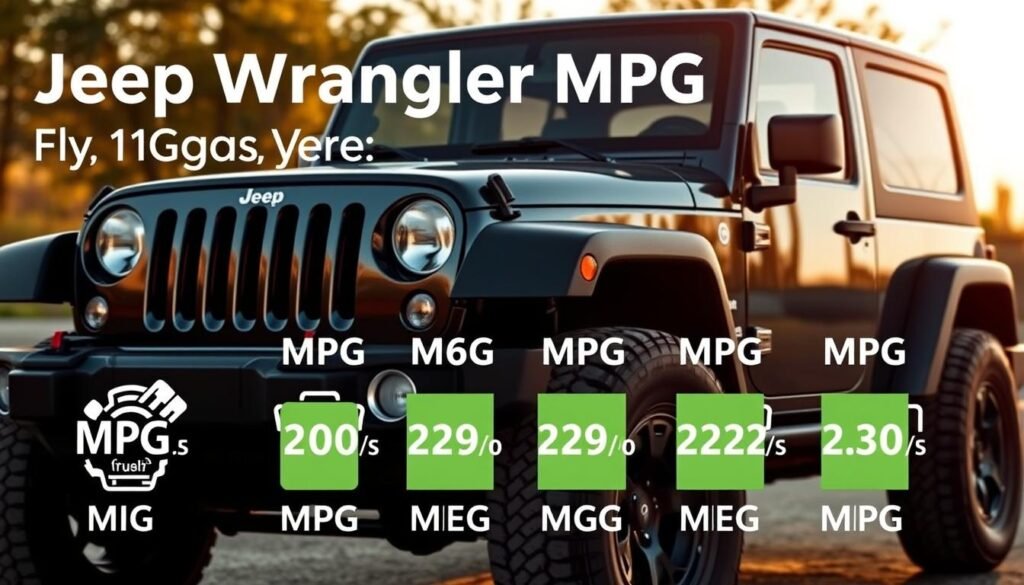
Comparing The 2024 Jeep Wrangler Engine Options
When looking into the 2024 Jeep Wrangler, checking out the engine options is key. You have two main choices: the 3.6-liter Pentastar V-6 and the 2.0-liter turbo four-cylinder.
Knowing how each engine performs will guide you to the best pick for your driving habits, performance needs, and how much you want to save on gas.
3.6-Liter Pentastar V-6 Performance
The 3.6-liter Pentastar V-6 is known for its dependability and strong output. This powertrain puts out 285 horsepower, perfect for off-roading and towing.
If you’re comparing Jeep engines, the V-6 is both powerful and relatively efficient, making it a favorite among Jeep fans.
2.0-Liter Turbo Four-Cylinder Advantages
The 2.0-liter turbo four-cylinder is great for saving on fuel. It punches out 295 lb-ft of torque, ensuring quick acceleration and smooth driving.
For better fuel economy in a Jeep Wrangler, the turbo four-cylinder is the way to go. It offers powerful performance without the big fuel bills, ideal for daily driving or long trips.
| Engine Type | Horsepower | Torque (lb-ft) | Fuel Economy (MPG) |
|---|---|---|---|
| 3.6-Liter Pentastar V-6 | 285 | 260 | 18 city / 23 highway |
| 2.0-Liter Turbo Four-Cylinder | 270 | 295 | 21 city / 24 highway |
Jeep Wrangler MPG by Transmission Options
The type of transmission you pick has a big impact on your Jeep Wrangler’s gas mileage. Knowing about different transmission choices helps you pick wisely for better fuel efficiency.
The six-speed manual transmission with the 3.6-liter Pentastar V-6 engine gives 17 mpg in the city and 23 mpg on the highway. The combined rating for the two-door model is 19 mpg.
This setup is great for those who like driving with manual control. Choosing the eight-speed automatic transmission makes the fuel economy better.
With this choice, the two-door Wrangler gets a combined MPG of 20, while the four-door version gets 19 mpg. Such an improvement is crucial for long drives or everyday travel.
Here’s a comparison of the different Jeep Wrangler transmission options and their respective fuel economy by transmission:
| Transmission Type | Configuration | City MPG | Highway MPG | Combined MPG |
|---|---|---|---|---|
| Six-Speed Manual | Two-Door | 17 | 23 | 19 |
| Eight-Speed Automatic | Two-Door | 18 | 22 | 20 |
| Eight-Speed Automatic | Four-Door | 19 | 22 | 19 |
Picking the right transmission can improve your gas mileage and overall performance.
Whether you prefer the fun of a manual or the ease of an automatic, understanding these options helps you match your car to your driving style.
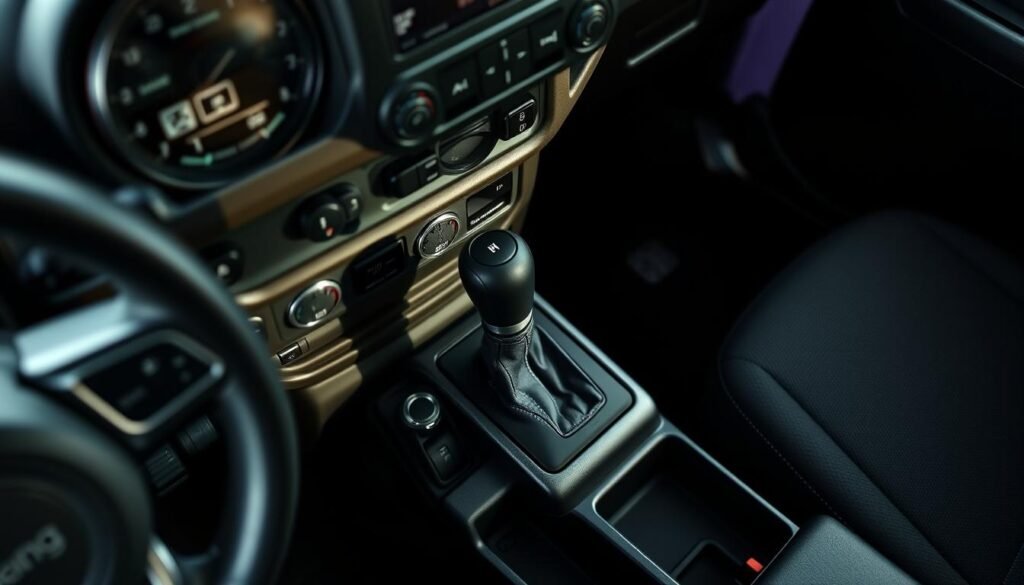
Jeep Wrangler Gas Mileage by Configuration
The type of Jeep Wrangler you pick affects its gas mileage. Choosing a two-door or four-door model changes how much fuel you’ll use. This section provides info on the fuel economy for each option.
Two-Door vs. Four-Door Mileage
The two-door Jeep Wrangler is usually better on gas because it’s lighter and smaller. It gets about 17/23/19 MPG in the city, on highways, and combined.
However, the four-door models offer more room but have slightly lower fuel efficiency. They average about 16/22/19 MPG.
This comparison can guide you in choosing the right Wrangler based on your fuel efficiency needs.
| Configuration | City MPG | Highway MPG | Combined MPG |
|---|---|---|---|
| Two-Door | 17 | 23 | 19 |
| Four-Door | 16 | 22 | 19 |
Jeep Wrangler Fuel Economy: Trim Levels Overview
Jeep Wrangler trim levels have different fuel economies. These depend on their engines and transmissions.
For instance, the Sport and Sahara trims often give similar MPG when they use the same engine. This is good for those who want both good performance and efficiency.
The Rubicon, with its extra features and off-road power, might use more fuel. This happens because it’s heavier.
Knowing the fuel economy of the Jeep Wrangler’s trims helps you pick the best one for you.
Below, you’ll find a table that shows how different trims compare in terms of fuel use:
| Trim Level | Engine Option | City MPG | Highway MPG |
|---|---|---|---|
| Sport | 3.6L V6 | 20 | 24 |
| Sahara | 3.6L V6 | 20 | 24 |
| Rubicon | 3.6L V6 | 19 | 23 |
| 4xe (Plug-in Hybrid) | 2.0L Turbo I4 | 49 MPGe | 22 |
This table helps you understand what to expect from each Jeep Wrangler trim in terms of fuel use. Think about how off-road skills and fuel efficiency balance for your lifestyle.
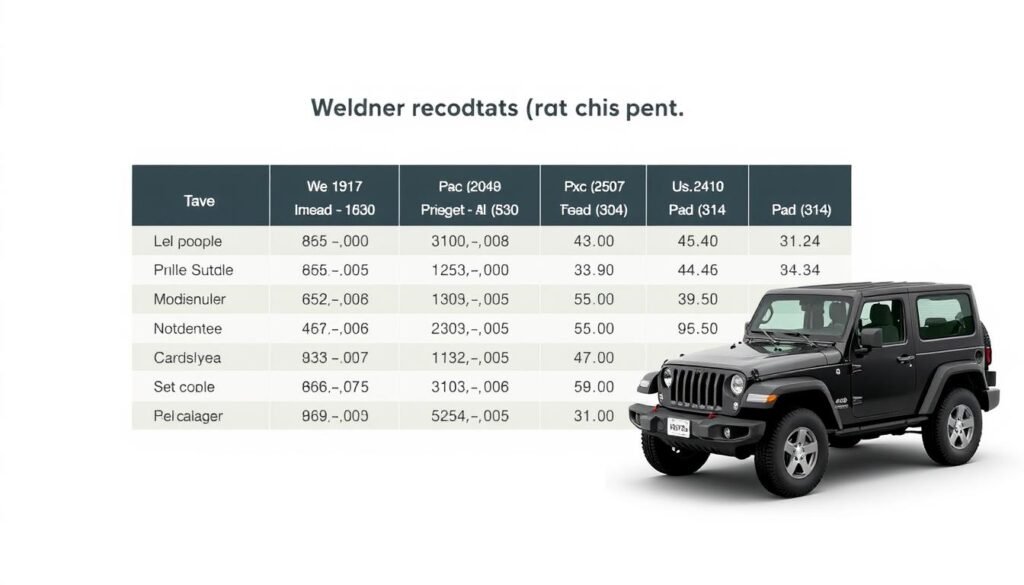
Fuel Consumption of Jeep Wrangler Models
When looking at the Jeep Wrangler’s fuel use, different models offer varied results. Buyers should think about this before choosing.
Each model brings a mix of power and fuel-saving features suited to various tastes and needs. The standard 3.6-liter Pentastar V-6 engine strikes a good balance.
It uses about 18 MPG in the city and 23 MPG on highways. Perfect for daily driving and off-road excursions, it’s both powerful and efficient.
Interested in the 4xe plug-in hybrid’s gas usage? This model is quite efficient, reaching about 49 MPGe combined.
It shows great savings and is better for the environment than traditional engines. For power lovers, the 6.4-liter HEMI V-8 engine makes a strong statement.
Yet, its fuel efficiency is lower, with 13 MPG in the city and 16 MPG on the highway. This shows the balance between excitement and saving fuel.
To sum up, knowing the fuel use differences in Jeep Wrangler models helps in making a smart choice. It depends on what you value in driving and performance.
Tips For Improving Jeep Wrangler Fuel Efficiency
Many Jeep Wrangler owners want to get better fuel efficiency. By adopting some easy habits, you can see a big improvement in gas mileage.
First, keep your tires at the right pressure. Having tires that are not inflated enough can use more fuel.
It helps to accelerate slowly and avoid slamming on the brakes. Smooth speed changes help save gas and reduce wear on your engine.
Also, try to keep your Jeep lighter. Take out things you don’t need to boost your mileage. Making small upgrades can also enhance fuel efficiency.
Adding a cold air intake system improves engine air flow, which can help your performance without hurting your ability to drive off-road.
Using things like a sleek roof rack or wind deflectors can cut down on air resistance. This means you could get better mileage, especially when driving on highways.
Here’s a quick list of tips for better gas mileage:
- Maintain proper tire pressure
- Avoid rapid acceleration
- Minimize unnecessary weight
- Upgrade to a cold air intake
- Use aerodynamic accessories
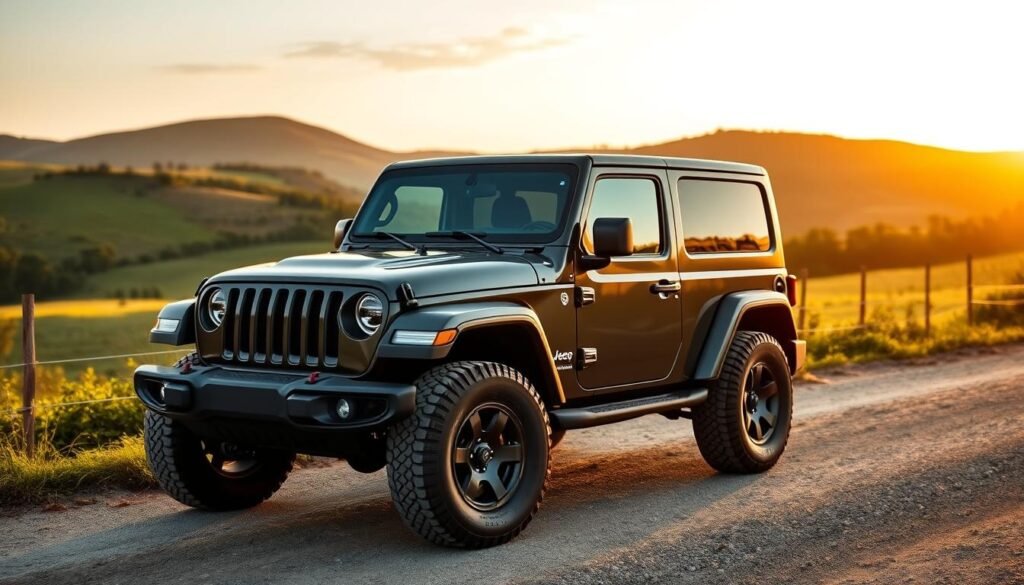
Are Jeep Wranglers Good on Gas?
Are Jeep Wranglers good on gas? It’s key to see how newer models have gotten better with fuel use.
Jeep Wranglers weren’t always the best for gas mileage because of their off-road skills and tough design.
But, the new 4xe model with hybrid technology has changed how we see their fuel efficiency. The 4xe hybrid really steps up the gas mileage.
This makes it great for those who care about fuel economy but still want off-road fun. Also, the turbocharged engines in newer models make driving more efficient.
This blend of new engine tech and smart design shows Jeep Wranglers are getting better at saving fuel.
What you want from your Jeep Wrangler matters when picking one. If you love off-roading and tough trails, you might look more at power than gas savings.
But for regular city drives and long trips, the better gas mileage in newer Jeep Wranglers makes them a choice worth looking at.
Conclusion
In our discussion about the Jeep Wrangler’s fuel efficiency, we looked at engine types, transmission options, and trim levels.
The introduction of hybrid versions has helped improve the Wrangler’s gas mileage.
These changes mean you can drive further without spending as much on gas, while still enjoying the Wrangler’s tough performance.
Deciding if the Jeep Wrangler is right for you involves looking at its performance versus how much gas it uses.
Knowing about the different models and their features lets you choose wisely. It ensures your choice matches how and where you drive.
To get the most out of your Jeep Wrangler’s gas mileage, it’s smart to know how each part works.
This knowledge helps you find the right balance between exciting off-road trips and saving on gas. Own a Jeep Wrangler and enjoy the freedom it brings, with an eye on fuel savings.
FAQs
Q: Are Jeep Wranglers good on gas?
A: Jeep Wranglers weren’t always known for being gas savers. But now, with the 4xe hybrid and turbo engines, their MPG is better. This makes them more competitive with other cars.
Q: What is the gas mileage of a Jeep Wrangler?
A: Gas mileage can vary depending on the model. The classic 3.6-liter V-6 gets about 18/24/20 MPG. The 2.0-liter turbo does slightly better at 20/23/21 MPG.
Q: What factors influence Jeep Wrangler fuel efficiency?
A: A lot affects fuel efficiency. This includes the engine type, whether you pick a manual or automatic transmission, the size of the Jeep, and even the type of tires and accessories you use.
Q: What can I do to improve my Jeep Wrangler’s fuel efficiency?
A: Keeping your tires properly inflated helps. So does driving smoothly without sudden stops and starts. Reducing extra weight and adding aerodynamic parts that fit your style can also improve gas mileage.
Q: How does the Jeep Wrangler’s transmission affect MPG ratings?
A: Choosing your transmission wisely can impact MPG. The eight-speed automatic typically performs better in fuel economy than the six-speed manual, especially when combining city and highway driving.
Q: What is the fuel economy of the Jeep Wrangler 4xe?
A: The Jeep Wrangler 4xe is quite efficient, reaching about 49 MPGe. It’s a top choice for saving fuel in the Wrangler series.
Q: Are different trims of the Jeep Wrangler fuel-efficient?
A: Indeed, fuel efficiency varies among the various trims. The mix of engine and transmission in each trim changes MPG ratings. The more rugged off-road trims generally use more gas.

